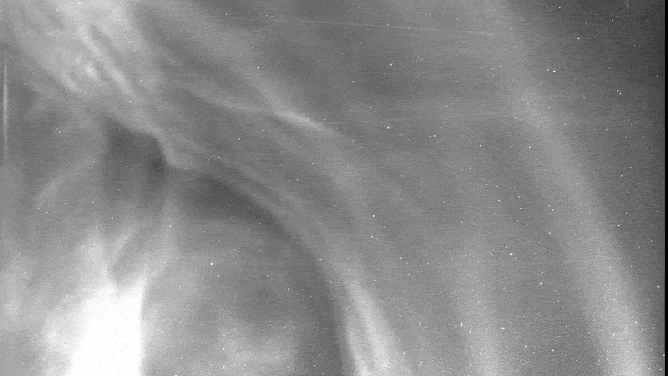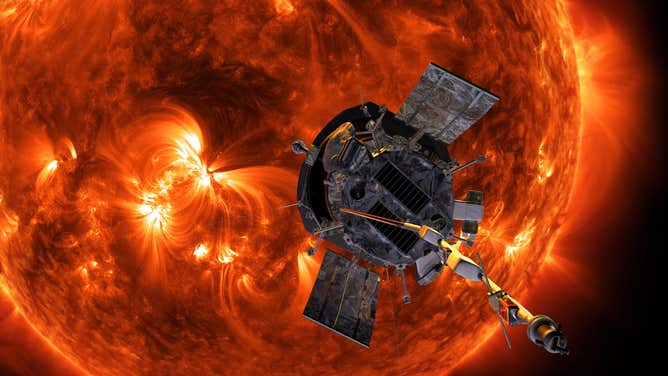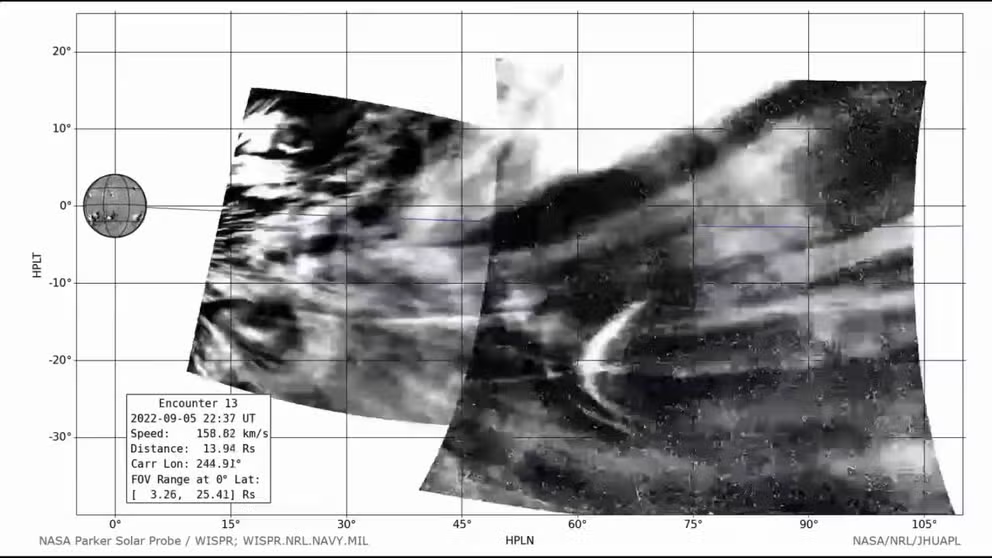NASA sees solar storm ‘vacuum up’ interplanetary dust for first time
The findings were recently published in The Astrophysical Journal, helping prove a 20-year-old theory about how the shape and speed of a CME can be affected by interplanetary dust.
NASA's Parker Solar Probe captures moment of coronal mass ejection
This video is from Sept. 5, 2022 and is a composite collected by the Wide Field Imager for NASA's Parker Solar Probe (WISPR) instrument onboard, which captured the eruption of a coronal mass ejection. The CME's explosion becomes visible starting around 14 seconds into the video. The Sun is depicted off to the left in the video. (Courtesy: NASA / Johns Hopkins APL)
A video shot by NASA’s Parker Solar Probe on Sept. 5, 2022 shows one of the most powerful coronal mass ejections (CME) ever recorded and how it interacted with interplanetary dust near the Sun.
The findings were recently published in The Astrophysical Journal, helping prove a 20-year-old theory about how the shape and speed of a CME can be affected by interplanetary dust.

Parker Solar Probe’s Wide Field Imagery for Solar Probe (WISPR) camera observes as the spacecraft passes through a massive coronal mass ejection on Sept. 5, 2022.
(NASA / Johns Hopkins APL / Naval Research Lab / NASA)
CMEs are large expulsions of plasma and magnetic field from the outermost part of the Sun’s atmosphere, according to NOAA. Interplanetary dust is made of tiny particles from asteroids, comets and other planets and is found throughout the solar system, NASA said.
‘MOST INTENSE’ SOLAR FLARE CAPTURED ON STUNNING IMAGERY
NASA noted that studying the physics behind how CMEs and dust interact can help further the understanding and forecasting of space weather. Space weather is largely driven by CMEs, which can create geomagnetic storms that disrupt satellites, power grids and other technology.
Scientists were able to have a close-up view of the interaction between a CME and interplanetary dust on Sept. 5, 2022, when the Parker Solar Probe swung by the star and captured the CME displacing the dust to about 6 million miles from the Sun. This distance is about one-sixth of the distance between the Sun and Mercury, NASA said.

Artist’s concept of the Parker Solar Probe spacecraft approaching the sun.
(NASA / Johns Hopkins APL / NASA)
NASA said that because scientists have only observed this effect in connection with the Sept. 5 event, the researchers theorize that dust depletion may only occur with the most powerful CMEs.
"These interactions between CMEs and dust were theorized two decades ago, but had not been observed until Parker Solar Probe viewed a CME act like a vacuum cleaner, clearing the dust out of its path," said Guillermo Stenborg, an astrophysicist at the Johns Hopkins Applied Physics Laboratory (APL) and lead author on the paper. APL built and operates the Parker Solar Probe.
The Parker Solar Probe was launched in 2018 with a multi-year mission to come close to within 4 million miles of the Sun’s surface, facing heat and radiation like no spacecraft before it, NASA said.
